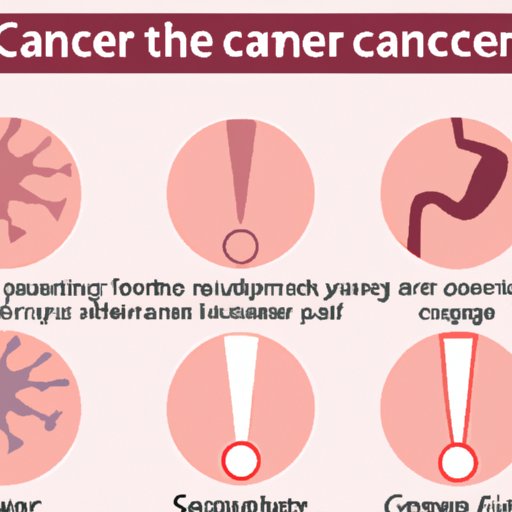
Introduction
Cancer is a frightening diagnosis that can have devastating consequences when caught too late. It is essential to know how to recognize the early warning signs of cancer and understand the importance of regular medical check-ups. In this article, we will go through the different symptoms to watch out for, early detection methods, self-examination techniques, medical tests, and the science behind cancer diagnosis.
Symptoms of Cancer: Warning Signs to Watch Out For
Early diagnosis of cancer is essential for successful treatment and cure. Recognizing the warning signs is crucial in diagnosing cancer at its most treatable stage. Some of the symptoms that people experience include:
– Unexplained weight loss
– Persistent coughing
– Unexplained pain
– Bleeding in the stool or urine
– Unusual lumps or growths underneath the skin’s surface
These symptoms could be signs of different types of cancer, so it is essential to seek medical attention for any prolonged, unusual symptoms.
Early Detection: How to Spot Cancer at the Earliest Stage
Early detection is key to successful cancer treatment. There are different cancer screening tests that people can undergo to detect cancer in its earliest stages. Some of these cancer screening tests include:
– Mammography, PAP smear, and breast exams
– Colonoscopy and Fecal Occult Blood Testing
– Skin exams
– Prostate exams
It is crucial to understand that cancer risk increases with age and in those with certain risk factors, such as a family history of cancer. It is therefore crucial to work with a healthcare provider to determine when to begin cancer screening tests and how often to get them.
Self-Examination: How to Check for Cancer at Home
In addition to medical check-ups and cancer screening tests, self-examination is an essential tool in early cancer detection. Some of the typical self-examination techniques include:
– A monthly breast exam for women to detect any abnormal lumps or changes
– Skin checks to detect any skin lesions, moles, or changes
– Testicles exams to detect any lumps, tenderness, or enlargements
It is vital to know when to perform self-examinations and how to perform them correctly to effectively detect any warning signs of cancer.
Medical Tests: What to Expect When Diagnosing Cancer
If warning signs persist, and a healthcare provider suspects cancer, they may recommend further diagnostic tests to confirm the diagnosis. These tests include:
– Biopsies
– Imaging tests such as X-rays and MRI scans
– Blood tests
It is crucial to understand medical terminology and the procedures involved in these diagnostic tests. Patients should advocate for themselves by asking questions, getting second opinions, and understanding the diagnosis and treatment options that may be available to them.
Understanding Cancer: The Science Behind Cancer Diagnosis and Testing
Cancer is a complex disease, and understanding its biology is essential in the diagnosis and treatment of cancer. Modern diagnostic technologies include:
– Genetic testing
– Liquid biopsy
– Immunotherapy
Researchers are continually making advancements in cancer diagnosis and treatment. The development of targeted therapies and precision medicine is making precision diagnosis and treatment of cancer possible.
Conclusion
Diagnosing cancer in its earliest stages is essential for success in treatment and cure. Recognizing the warning signs, regular medical check-ups, and self-examinations all play a vital role in early cancer detection. Understanding the science behind cancer diagnosis and testing is equally important. Seek out medical care and support, understand the diagnosis and treatments available, and advocate for yourself throughout the diagnostic and treatment process. Remember, early detection saves lives.





